If you want your car battery (or any other type of lead-acid battery) to last as long as possible, it’s critical you remove corrosion from the battery terminals when it forms.
Built-up corrosion can harm the performance of your car battery and cut the battery’s life short. But luckily, you can remove corrosion from your battery terminals pretty easily.
So, in this free DIY Living step-by-step guide, we’ll show you:
(#1) The 7 simple steps to clean corrosion from your battery terminals
And…
(#2) How to prevent corrosion from forming in the first place
We’ll also answer some FAQs about battery corrosion at the end of this step-by-step guide:
First Things First – Safety Precautions:
Before we show you the steps to remove corrosion from lead-acid batteries (i.e. most car/truck batteries, marine batteries, golf cart batteries, forklift batteries, etc.), it’s important to go over some safety guidelines first.
Lead-acid batteries have hydrogen-oxygen gases and sulfuric acid in them. So, anytime you work with a lead-acid battery, like your car battery, you want to take safety precautions to prevent burns or other issues with the battery.
So, here are a few safety guidelines to use when working on your battery:
- Always wear approved safety goggles or glasses, plus a face shield ideally.
- Wear clothing that protects your body, hands and face.
- Work in a well-ventilated area.
- Don’t lean over the battery while working on it.
- Work carefully with metallic tools and conductors.
- Don’t expose the battery to any flames from cigarettes, ignition sources, sparks or any other source.
- Keep the vent caps tight.
- If you come in contact with any battery fluids, flush the area generously with water and contact a physician.
- Don’t let children near the car battery.
So, why is corrosion so harmful to batteries?…
And why is it important to keep your batteries free of corrosion in the first place?…
Well, the battery terminals are where the car connects to the battery with cables. And this connection (i.e. car cables to battery terminals) relies on direct contact to transfer power from the battery to your car so you can start your car. But corrosion stands in the way of this power transfer.
We’ll talk more about this in the FAQs at the end of this step-by-step guide, but basically, terminal corrosion starts as a result of escaped gases coming from the battery acid. So, corrosion will naturally occur – which is why it’s important to regularly check your battery for it.
So, if you are experiencing trouble starting your car or a loss of your vehicle’s electrical power, don’t just assume you have a bad car battery. Instead, inspect the terminals for corrosion, and if any is present, follow this step-by-step guide to get rid of it…
And then use the trick at the end of this 7 step guide to help prevent it from reforming:
How To Remove Battery Corrosion: The 7 Step Guide:
Step #1: Disconnect the Car Battery
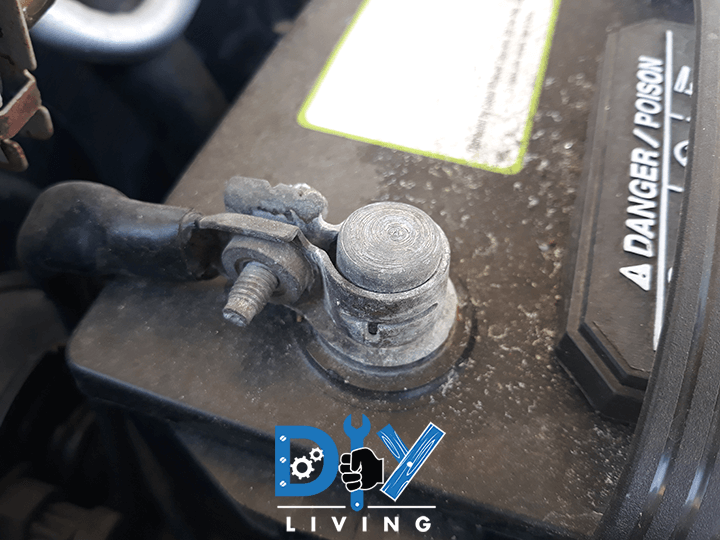
Before you work on the car battery, you want to remove the cables from the terminals. Make sure you don’t touch them both at the same time.
Start with the grounded terminal first. This is the negative terminal and is colored black. Remove the clamp.
Then disconnect the ungrounded terminal. The ungrounded terminal is positive and colored red.
If the terminals are heavily corroded, it might be challenging to remove the clamps. You may need a pair of vice grips to get the job done. Just wiggle the clamp until it is loose enough to remove on your own.
Step #2: Inspect the System
You should look over the cables and clamps for any signs of damage. If you notice anything wrong, replace it.
It won’t do any good to remove the corrosion on the battery to create good contact at the terminal if there is any other damage on the cables or clamps.
To do this, look at the point where the battery cable meets the clamp. If you notice excessive levels of white or blue/green residue, you might need to replace the cable.
You can also gently tap the clamp with a screwdriver to see if any powder falls loose. Make sure you don’t breathe in this powder, as it is crystallized acid that could cause respiratory trouble.
Next, take a look at the car battery itself. If you notice any cracks, warping or damage, you may need to replace it.
While the battery is out, this may be a great time to recondition the battery to give it a longer life.
Step #3: Create Terminal Cleaning Solution
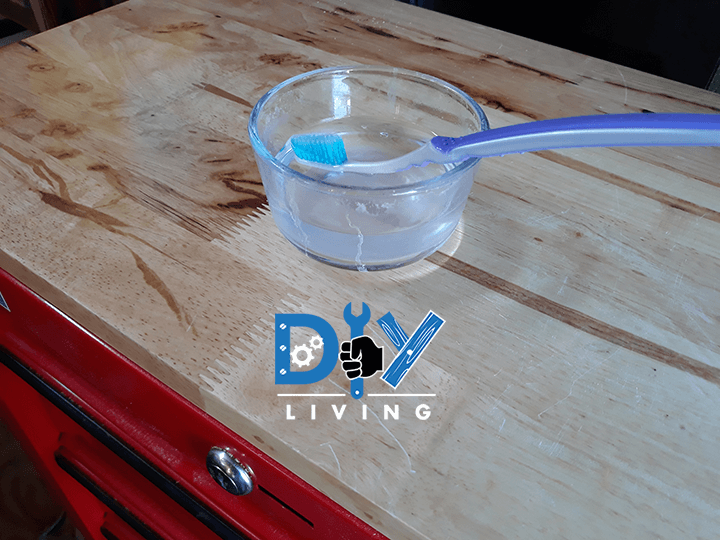
To neutralize the sulfuric acid, you want to mix a tablespoon of baking soda with one cup of hot water.
Some people prefer to put the baking soda on the terminals directly without water, and then add the liquid after. You can opt for this method if the corrosion is severe.
Step #4: Clean the Battery Terminals
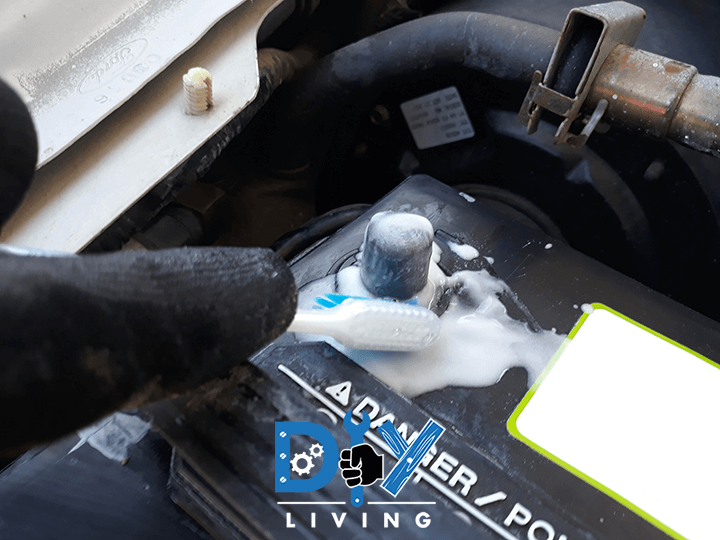
Next, gently spray down the battery with a spray bottle or hose. Doing this will help start the cleaning process and also help ensure any battery acid on the outside of the battery doesn’t become air born (so it doesn’t get on your eyes, skin or clothing).
Then you want to use a soft brush and apply the baking soda cleaning solution to the battery terminals. With a soft brush (like an old toothbrush), you can apply more water than with a stiff brush.
Once you’ve applied the solution, use the old toothbrush or a terminal cleaner and start scrubbing.
As the baking soda comes in contact with the corrosion, it will fizz. Let it work for a few seconds to ensure that the acid is neutralized.
Make sure you also clean off any corrosion on the cable clamps. Pay close attention to the inside of the clamps, at the point where the connection is made.
If the battery cables need to be cleaned, you can dip the ends in hot water.
Step #5: Rinse the Battery
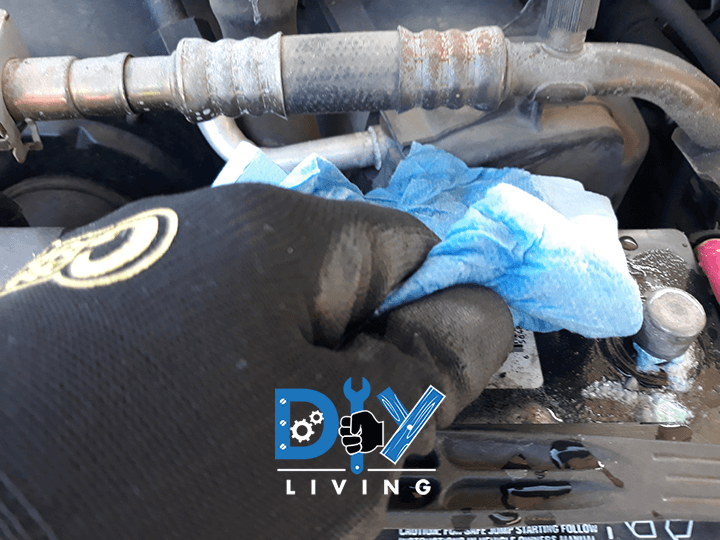
Put some cool water on a clean rag and wipe up the mix.
Do not get any of the mixture on your hands, your clothing or the vehicle. Even when it’s diluted, the sulfuric acid can create burns and other adverse reactions.
Step #6: Protect the Terminals with Petroleum Jelly
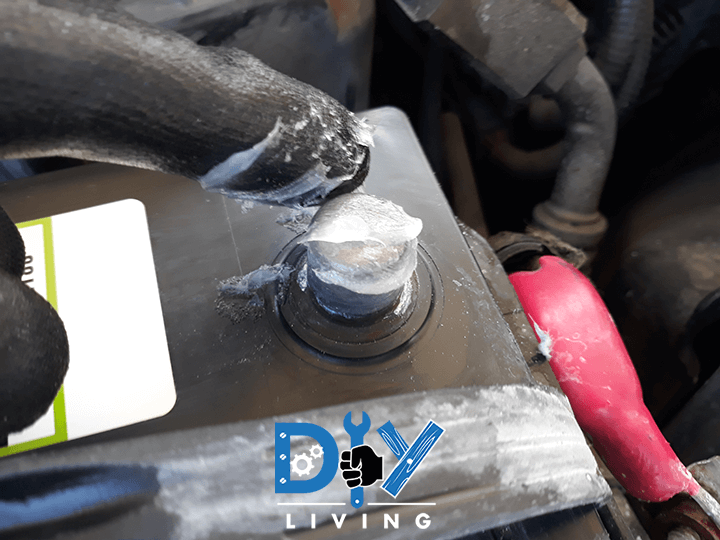
Applying a thin layer of petroleum jelly on the terminals prevents corrosion. It also allows you to reconnect the clamps to the terminals easier.
You can use the petroleum jelly on any exposed metal surface. So you can apply the petroleum jelly to the terminals, clamps and posts.
Step #7: Reconnect the Battery
When the battery is completely cleaned and you’ve applied the petroleum jelly, it’s time to reconnect it.
Start by reconnecting the positive clamp first. This is the red clamp.
After, reconnect the negative clamp. This is the black clamp.
We recommend using a wrench to tighten them, while being careful not to strip them.
Car Battery Corrosion FAQ
How often should battery corrosion be cleaned?
There is no hard rule about cleaning battery corrosion. You should inspect the battery regularly and clean it as needed.
Does a corroded car battery need to be replaced?
If you are able to clean off the corrosion, there’s no need to replace the battery.
Pro Tip: While you’re inspecting and cleaning your batteries, this may also be a good time to fully recondition them to maximize their lifespan.
What causes car battery corrosion?
The terminal corrosion is caused by escaped hydrogen gas from the battery acid. This gas mixes with the atmosphere and produces a layer of corrosion.
Sometimes, when the corrosion occurs only on the negative terminal, you can assume that the system is undercharging. On the other hand, having corrosion only on the positive side might indicate an overcharged situation.
What if I need to clean the battery terminals on the go?
You can use a can of Coca-Cola or Pepsi if you are in a jam. Cleaning battery terminals with soda is an old trick used for generations. It might not be the best liquid for your battery, but it eats corrosion like a champ if you’re in a jam.
Use This Guide to Keep Your Batteries Lasting as Long as Possible!
We hope you found this step-by-step guide helpful! Whenever you need to remove corrosion on your battery, you can use this 7 step guide. And don’t forget to use the petroleum jelly tip to help prevent corrosion from reoccurring!
It’s very common for batteries to die prematurely because of corrosion issues but this guide will help prevent this, and ensure your batteries lasts as long as possible!
And if you want to take it to the next level and learn how to fully recondition lead-acid batteries to greatly increase their lifespan, click here to watch a presentation to learn more.



3 replies to "How to Clean Corrosion from Your Battery Terminals & Prevent It from Reforming (The 7 Step Guide)"
This guide was very helpful. I just used it on my car battery and it’s very effective
Thanks for this corrosion removal guide. I’ll be using this on my lead-acid battery soon. It needs it!
Very straightforward guide. Thank you.